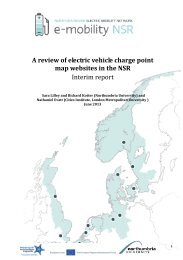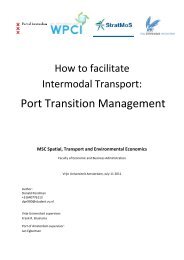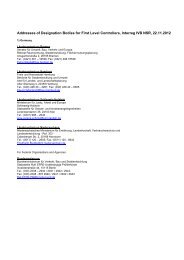Smart Cities Project Guide.pdf - Interreg IVB North Sea Region ...
Smart Cities Project Guide.pdf - Interreg IVB North Sea Region ...
Smart Cities Project Guide.pdf - Interreg IVB North Sea Region ...
You also want an ePaper? Increase the reach of your titles
YUMPU automatically turns print PDFs into web optimized ePapers that Google loves.
Stad Kortrijk<br />
Kortrijk, Belgium<br />
www.kortrijk.be<br />
The city of Kortrijk has a population of 75,000, and is in the south of the<br />
Belgian province of West-Flanders on the Leie river. It is 25 kilometres northeast<br />
of the French city of Lille and 42 km southwest of Ghent. Kortrijk, Lille<br />
and the Belgian city of Tournai make up the transnational Eurodistrict of<br />
Rijsel-Kortrijk-Doornik, which has a population of approximately 1,900,000.<br />
In the 19th and 20th century Kortrijk was an important centre of the flax<br />
industry, and the textile industry is still important today. The last 30 years<br />
has seen a diversification of economic activity, with the growth of electronics<br />
industries and automotive suppliers. Over the last ten years the city has<br />
focused on developing the design industry.<br />
Kortrijk has a wide range of local pilots as part of the <strong>Smart</strong> <strong>Cities</strong> project:<br />
• <strong>Project</strong> 1777 – The free phone number 1777 is a single phone<br />
number citizens can use to contact a variety of municipal services.<br />
Specially trained staff guide callers to the right service and the right<br />
person. This is the first step towards the development of a customer<br />
contact centre.<br />
• Process Description (Mavim) – Kortrijk is using process descriptions<br />
as part of efforts to digitalise business processes.<br />
• Narrowcasting screens – interior and exterior – Cultural and<br />
sports events that use the city’s facilities will be promoted not just on<br />
screens inside city buildings but also on external digital signs/LED walls.<br />
While each channel will have specific/targeted content, they will both be<br />
steered by the same software and the same team in the municipality.<br />
• I-Points: digital tourist kiosks – In the summer of 2010 this pilot<br />
will install eye-catching touch-screens that provide tourist information in<br />
different places in the city.<br />
• Frame portal for WiFi networks and I-points – The portal that<br />
provides content for the I-point digital tourism kiosks will be accessible<br />
via the city’s WiFi-networks and on the university campuses. It will<br />
collect information from a range of existing databases and deliver this to<br />
touchscreens, mobile devices and normal computers.<br />
• Mypage and authentication – A first test for the authentication<br />
possibilities of the Belgian E-ID card will be the online authentication of<br />
city council members when accessing the city’s intranet and e-decision<br />
system.<br />
17












